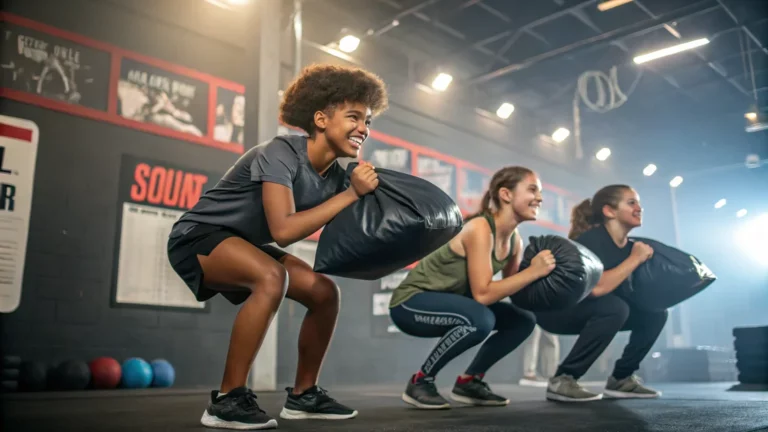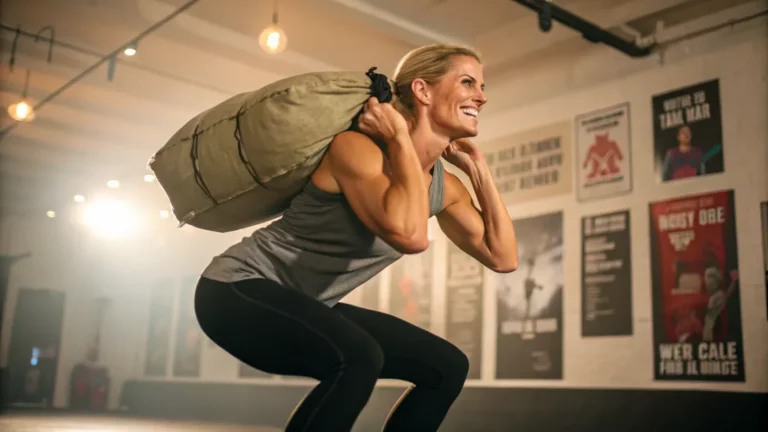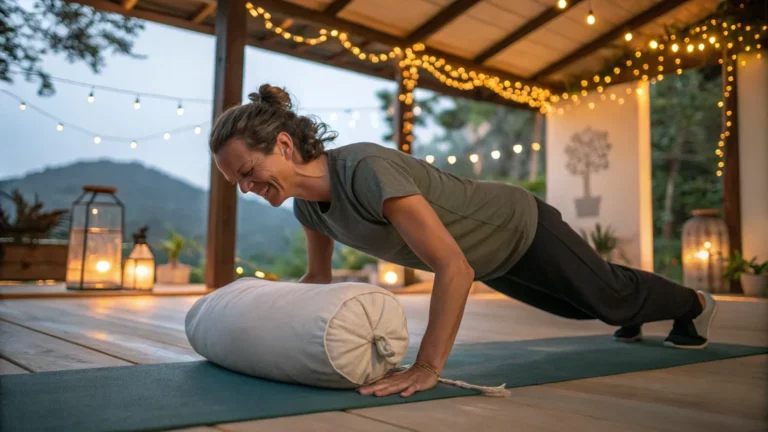Do you struggle with poor posture, and do you find that it affects your day to day life?
Do you experience back pain and fatigue, and you want to find a way to improve your posture, and to help you to sit up straight and stand tall, with confidence?
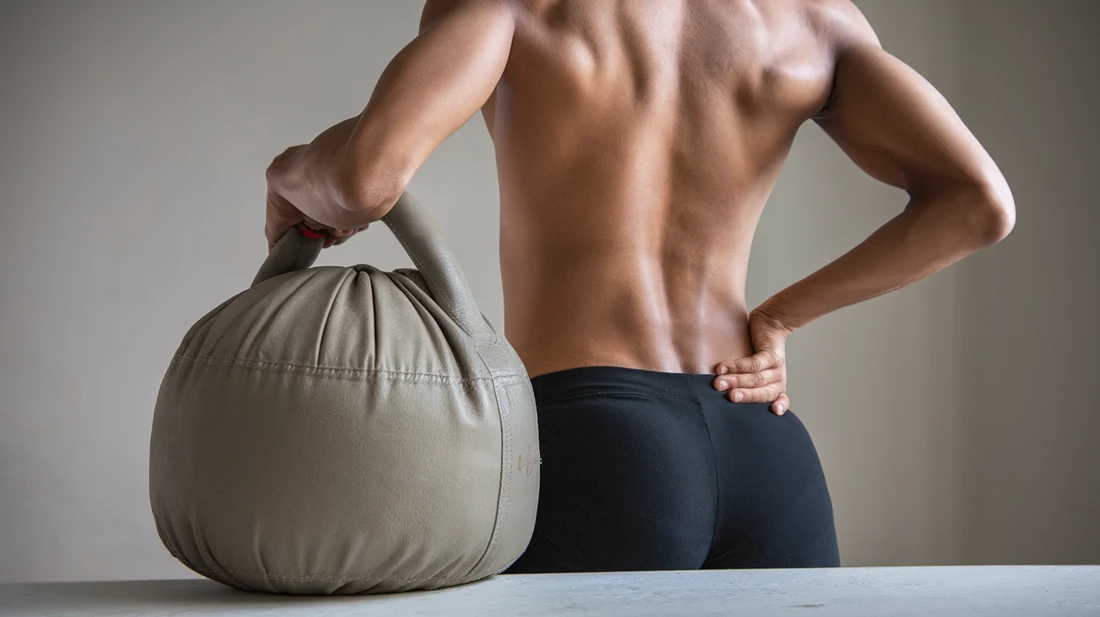
Then you are in the right place.
Traditional methods, may provide short term solutions, but they do not provide you with the strength, stability, or mobility that you need, for long term results.
That’s where sandbag training comes in – a versatile and effective method that will help you to improve your posture.
It uses simple, and functional exercises that will strengthen your core and back muscles, and will help to improve your body’s alignment, and overall stability.
This guide will show you how to use sandbag exercises, to improve your posture, and by doing this, you will strengthen your core and back muscles, and you will also improve your overall mobility.
Get ready to discover a new approach to building a body that feels great, and that stands tall, with confidence.
The Importance of Good Posture and Core Strength
To understand how sandbag training can help to improve your posture, it is important to first understand the negative impact of poor posture and the importance of core and back strength.
Here’s why these aspects are so vital:
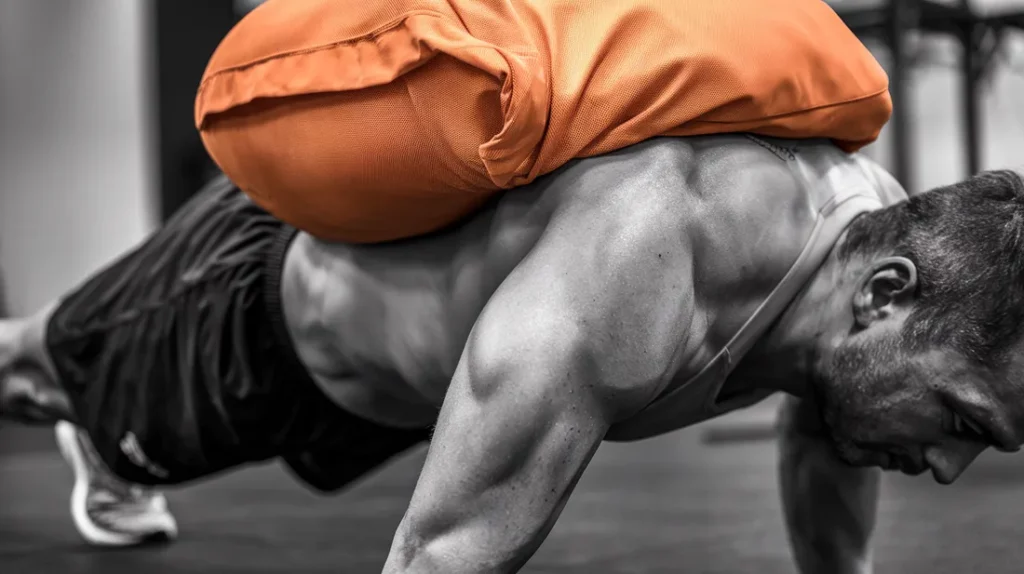
Impact of Poor Posture
- Pain: Poor posture, especially if it is over a prolonged period, can lead to chronic pain in your back, neck and shoulders, and can also cause a range of other problems such as headaches.
- Fatigue: Incorrect posture can also result in increased fatigue, as your muscles are not aligned correctly, and have to work harder to keep you upright.
- Limited Range of Motion: Poor posture can limit your range of motion and reduce your flexibility, as the muscles will become tight and stiff, and they will not be able to move correctly.
The Role of the Core
- Foundation for Posture: Your core muscles act as the foundation for your entire body, and they are essential for maintaining a good, and correct posture. They act as a natural support for your back, and keep your body upright.
- Spinal Stability: Strong core muscles help to stabilize your spine and prevent excessive stress and pressure on the surrounding muscles, ligaments and discs.
- Support for Your Back: Your core muscles also work together with your back muscles, to keep you stable and pain free.
The Importance of Back Strength
- Spinal Support: Your back muscles play a key role in supporting the spine, and maintaining an upright position. By strengthening the back muscles you will be able to maintain better posture, and you will be less likely to suffer from back pain, and spinal injuries.
- Proper Alignment: Back strength helps to pull your shoulders back and down, which will improve the alignment of your spine. The back muscles help to counterbalance the muscles of the chest and shoulders, which can be a major factor in causing poor posture.
- Balance: By strengthening your back muscles, you will be able to improve your overall stability and balance.
The Benefits of Functional Strength
- Real-World Activities: Functional strength, which is gained from sandbag training, translates to real-world movements, and helps you to perform everyday tasks, with greater ease.
- Improved Posture: Functional strength, will allow you to maintain good posture, even while moving, sitting or performing other physical activities. You will also be able to perform exercises more effectively and safely.
- Less Injury: Functional strength will also reduce your risk of injury, as the muscles will be better supported and have greater resilience.
Essential Sandbag Exercises for Improving Posture
These sandbag exercises are designed to target specific muscles and movement patterns that are essential for improving posture, and strengthening the core and back.
Focus on performing each exercise with proper form, and with slow controlled movements.
Sandbag Rows for Posture Correction

- Instructions: Stand with your feet shoulder-width apart, and bend at your hips, keeping your back straight. Hold the sandbag and pull it toward your chest, engaging your back muscles, and maintaining good posture throughout the movement. You must avoid using your arms to lift the weight, and focus on engaging the back and shoulder muscles.
- Benefits: Strengthens the upper back, shoulders, and core muscles, which all contribute to a more upright posture, and will also help to reduce back pain and stiffness.
- Safety Tips: Keep your back straight, and avoid rounding your shoulders. If you are new to this exercise, then start with a lighter weight, and progress gradually.
- Only perform this exercise if you are confident in your ability to do it correctly.
- Variations:
- Try using different grips to target your muscles in different ways.
- Try doing bent-over rows, or chest supported rows to improve the safety of the exercise, and to provide more back support.
Sandbag Planks for Core Strength and Posture
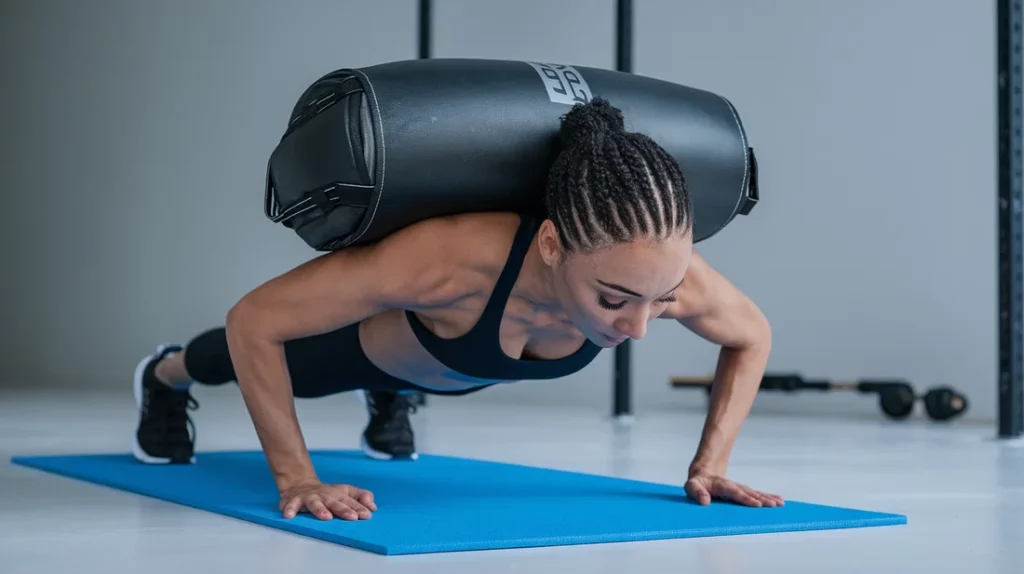
- Instructions: Start in a standard plank position, with your forearms on the floor, your body in a straight line, and your core muscles engaged. You can also perform variations, such as plank shoulder taps, or plank rows. You can also place a sandbag on your upper back, for added intensity.
- Benefits: Strengthens core muscles which are vital for supporting your spine and for maintaining good posture. This exercise also improves stability in your back and core, and will help to prevent injury.
- Safety Tips: Maintain a straight line from head to heels, engage your core throughout the movement, and avoid letting your hips drop. Do not overextend your back.
- Variations: You can make this exercise more challenging by doing a side plank, or by adding more weight, by having someone place the sandbag on your back.
Sandbag Carries for Improving Posture
- Instructions: Choose a sandbag and hold it securely, while engaging your core muscles. You can do a bear hug carry, or a sandbag shoulder carry, and make sure to keep your back straight. You must focus on maintaining good posture throughout the exercise. You can also perform the exercises in a variety of locations and on different surfaces.
- Benefits: Improves core strength, back strength, stability and endurance, which are all key to maintaining a good posture. It also helps to maintain balance and overall body control.
- Safety Tips: Keep your back straight, and avoid hunching, or rounding forward. Ensure that you have a clear path, and that there are no obstacles in your way.
- Variations: Try different types of sandbag carries, to improve strength and posture in different ways. You can try a sandbag front carry, sandbag shoulder carry, or a sandbag back carry, to target specific muscle groups.
Sandbag Squats for Posture Correction
- Instructions: Stand with your feet shoulder-width apart, with the sandbag in front of you, or on your back. Perform a squat, while maintaining proper form, engaging your core muscles, and keeping your back straight. You can modify this, by only performing partial squats, and focus on maintaining correct technique.
- You can also use a chair, or a wall for added support.
- Benefits: Strengthens the leg muscles, glutes and core, which are all needed to improve your posture. They will also help you to maintain your balance.
- Safety Tips: Keep your back straight, and do not let your knees go past your toes, and only go as deep as you are comfortable.
- Variations: You can try different variations, such as the sandbag goblet squat, or the sandbag Zercher squat, to target your muscles from different angles, and to make the exercise more challenging.
Sandbag Exercises for Rounded Shoulders

- Instructions: Focus on exercises that target the upper back and shoulders. This includes exercises such as the sandbag row, and sandbag carries, which both engage these muscles.
- Benefits: These exercises will strengthen the upper back muscles, and will help to pull your shoulders back, and down, to improve overall posture.
- Safety Tips: Keep your core engaged, and maintain a controlled movement throughout all the exercises. If you are using weights, do not use weights that are too heavy, and focus on your form.
Sandbag Exercises to Strengthen Neck
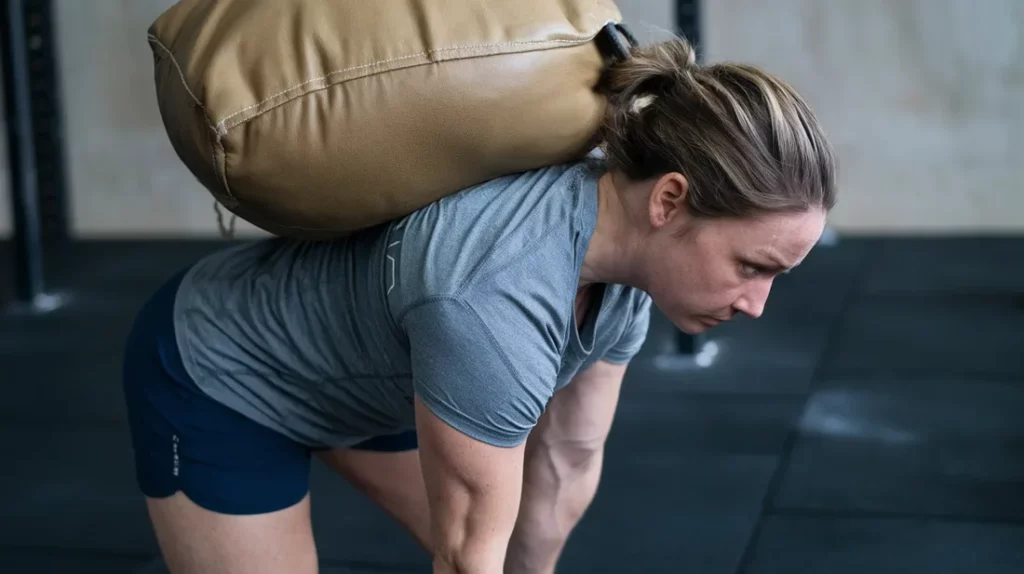
- Instructions: You can use sandbag exercises such as sandbag carries to engage your core and back muscles, to improve neck stability. You can also perform shoulder shrugs, and gentle neck stretches, with the sandbag on your back, and only if it is comfortable for you.
- Benefits: This will help to improve the strength of your neck muscles, and to provide support for your head and neck. This can help to reduce neck pain, and stiffness.
- Safety Tips: The exercises must be slow and controlled, and you must avoid using any weights that are too heavy, and that will lead to a strain in the neck muscles.
Sample Sandbag Workout Plan for Improved Posture
These sample workout routines are designed to help you build core and back strength, and improve your posture using sandbag training.
They provide a structured approach to training, that will help you to get the most out of the exercises.
Remember to always start slowly, and to listen to your body throughout.
Beginner Routine – Building a Strong Foundation
- Goal: To master the basic movements, build a base level of strength and stability, and to learn the proper form for each exercise.
- Warm-Up: 5 minutes of light cardio (e.g., walking or marching in place) and dynamic stretches, such as arm circles, leg swings, and torso twists.
- Workout:
- Sandbag Carries (Front): 2 sets of 30 seconds.
- Sandbag Planks (Modified – on knees): 2 sets of 30 seconds.
- Sandbag Rows: 2 sets of 8-10 reps (focus on slow and controlled movements).
- Sandbag Squats (Partial Squats): 2 sets of 8-10 reps (focus on engaging core).
- Sandbag Exercises for Rounded Shoulders: 2 sets of 8-10 reps (light weight).
- Sandbag Exercises to Strengthen Neck: 2 sets of 8-10 reps (using very light weight).
- Rest: 60-90 seconds rest between sets.
- Cool-Down: 5 minutes of static stretching, such as back stretches, leg stretches, and core stretches (hold each stretch for 30 seconds).
- Emphasis: You must always perform the exercises with good form, and focus on engaging your core muscles throughout all the movements.
Intermediate Routine – Adding Intensity and Complexity
- Goal: To improve core strength and stability, and to build muscle, and endurance, by increasing the intensity of the exercises.
- Warm-Up: 5-10 minutes of light cardio, dynamic stretching, and mobility exercises.
- Workout:
- Sandbag Carries (Variations): 3 sets of 45 seconds (such as front carry, or shoulder carry).
- Sandbag Planks: 3 sets of 45 seconds (with variations, such as plank shoulder taps, or plank rows).
- Sandbag Rows: 3 sets of 10-12 reps (with a variety of different grips).
- Sandbag Squats (Variations): 3 sets of 10-12 reps (use different variations of the squat).
- Sandbag Exercises for Rounded Shoulders: 3 sets of 10-12 reps (increase the weight gradually).
- Sandbag Exercises to Strengthen Neck: 3 sets of 10-12 reps (increase the weight gradually and focus on controlled movements).
- Rest: 45-60 seconds of rest between each set.
- Cool-Down: 5-10 minutes of static stretches, foam rolling and light movements.
- Emphasis: Focus on performing all the exercises correctly, with proper form, whilst also increasing the intensity, and the weights.
Workout Frequency
- Start Slow: When you are starting with sandbag training, then you must start slowly with 1-2 workouts per week.
- Listen to Your Body: As you become more comfortable, and you feel like you are getting stronger, then you can try increasing the intensity or frequency of your workouts. However, you should always listen to your body, and take rest days as needed.
- Rest Days: Always schedule in at least one rest day between workout routines, to allow your body time to recover, and repair your muscles.
- Rest and Recovery:
- Adequate Rest: You must allow your body to recover between workout sessions. You should always make sure you are getting 7-9 hours of good quality sleep every night.
- Nutrition: A well-balanced diet, is also vital, to allow your body to repair the muscles and to grow stronger.
- Hydration: You must also ensure you are properly hydrated, which is also essential for recovery.
Choosing the Right Sandbag for Posture Training
Choosing the right sandbag for your workouts is important for both safety, and for the effectiveness of the exercises.
Here are some key factors you should consider, before making a purchase:
Weight Recommendations
- Beginner Level: If you are new to sandbag training, it is best to start with a lighter weight (5-15 lbs), as this will allow you to focus on the proper form, and you will also be able to get used to the movements, without putting too much strain on your body.
- Intermediate Level: If you have some experience with sandbag training then you can use a medium weight (15-30 lbs). This will provide a greater challenge, but it will still allow you to do the exercises safely.
- Advanced Level: If you are more advanced and are used to using sandbags for your workouts, you can use a heavier weight (30-40+ lbs), but you must ensure that your form is perfect, and you must not push yourself beyond your limits.
- Adjustability: Choosing an adjustable sandbag is a great option, as it will allow you to vary the weight, depending on the exercise that you are doing, and will also allow you to progress slowly over time.
Size and Material
- Compact Size: You must ensure that the sandbag you are using is comfortable to hold, and is not too bulky or awkward. It should also be a size that is suitable for performing a range of exercises. A medium sized, cylindrical bag is a good option.
- Durable Material: Choose a sandbag that is made of a durable material, such as nylon or reinforced canvas. This will ensure that the sandbag lasts for a long time, and that the stitching is strong and will not break.
- Comfortable to Hold: It must also be made of a material that is comfortable to hold, as you will be using it for a range of different exercises, and will be holding it in different positions.
Handle Design
- Multiple Handles: You should always choose a sandbag with multiple handles, that are strategically placed on the sides and the ends. This will provide a range of different grip options, and will allow you to vary the exercises.
- Comfortable Handles: You must also ensure that the handles are comfortable, and easy to grip, and that they do not slip when you are using them.
DIY Options
- Duffel Bag: An old duffel bag is a good option if you are on a budget. They are inexpensive, and can be used as a great temporary solution.
- Heavy-Duty Bag: You can also buy a heavy-duty bag with a zipper, which will also provide a good option for performing sandbag exercises. Ensure that the bag is strong, and will not rip or tear easily.
- Inner Liners: For both of these options, you must make sure to have a good quality inner liner, such as waterproof bags or garbage bags, to prevent sand from spilling out.
Key Takeaways
- Weight: You must always ensure that you choose a weight that is appropriate for your fitness level, and your ability.
- Durability: Prioritize a bag that is durable and will withstand the stress of frequent use.
- Handles: The handles are very important, and you must choose a sandbag that has handles that are easy to grip and use.
- DIY Options: Creating your own sandbag is a great option if you are on a budget, and you are still able to get a great workout from it.
Progression, Safety, and Injury Prevention
When using sandbag training to improve posture, it’s essential to prioritize safety and gradual progression, to ensure that you are seeing the benefits of your training, without injuring yourself.
Here are some key considerations:
Start Slowly
- Beginner Exercises: If you are new to training, you must start with basic exercises, and focus on performing them correctly. Do not try to do anything too difficult when you are starting out.
- Lighter Weights: Always start with a lighter weight, and only increase the weight, when you feel you are ready to do so.
- Master Form First: You must master the correct form and technique before progressing to more complex exercises, or using more weight.
Proper Form
- Focus on Technique: Focus on proper technique, and do not rush through the exercises. It is better to do less repetitions with good form, than to do lots of repetitions using poor form.
- Controlled Movements: Perform the movements slowly and in a controlled manner, to activate the correct muscles, and to also improve stability.
- Core Engagement: Engage your core muscles throughout each exercise, as this is the foundation for good posture, and will also help to protect your spine.
- Straight Back: Always try to keep your back straight during all the exercises, and avoid hunching forward, or over extending.
Listen to Your Body
- Pain is a Signal: If you feel pain, then stop the exercise immediately and take a rest. You should never train through any type of pain.
- Rest: Ensure that you are getting adequate rest, and that you are not overtraining your body, as over training can lead to fatigue, and injury.
- Adjustments: You must adjust your workouts based on how you are feeling, and you must also reduce the intensity of your routine, when needed.
Common Mistakes
- Rounding Your Back: Avoid rounding your back, as this can lead to back pain. You must always focus on engaging your core and keeping your back straight.
- Using Momentum: Avoid using momentum to lift the weight. All movements must be done slowly, and controlled, and you should be using your muscles to lift the weight, and not momentum.
- Overusing your Arms: Focus on using your core, and your back to perform the exercises, and try to minimize the use of your arms.
- Overtraining: Ensure that you are not over training. You must always have rest days between your workout routines.
When to Seek Professional Help
- Persistent Pain: If you experience any persistent pain, or if your pain gets worse after the exercise, then you must consult with a medical professional.
- Existing Conditions: If you have any underlying medical conditions, then you must always consult with your doctor or a physical therapist before you begin any new exercise routine.
- New To Training: If you are new to training, then you should speak to a fitness professional, to ensure that you are using the exercises correctly.
FAQ (Frequently Asked Questions)
Here are some common questions, and clear answers, about using sandbag training to improve posture:
How does sandbag training improve posture?
- Core and Back Strength: Sandbag training strengthens your core, and your back muscles, which are both important for maintaining good posture, and for providing support for your spine.
- Muscle Balance: By working all the muscles around your back and core you can also help to improve the balance between your different muscle groups, which will also help to improve your posture.
- Body Awareness: Sandbag training will also help you to become more aware of your body and how you move, which is important for maintaining good posture in everyday life.
What are the best sandbag exercises for rounded shoulders?
- Sandbag Rows: Sandbag rows are great for improving your shoulder and upper back muscles, which will help to pull your shoulders back, and improve your posture.
- Sandbag Carries: Sandbag carries, will also improve your back strength, and will also engage your core muscles to help improve posture.
- Planks and Reverse Flyes: You should also include exercises such as planks and reverse flyes to further improve your posture.
Can sandbag training help with neck pain?
- By strengthening your neck, back, core and shoulders, using sandbag training you will be able to improve neck alignment, and you will also be able to reduce any stiffness or pain.
- You should always focus on performing the exercises slowly and with control, and avoid exercises that put too much stress on your neck.
How often should I use sandbag training to improve posture?
- You should start with 2-3 sessions per week, whilst also making sure that you have adequate rest days in between your training sessions. This is vital for ensuring that you are making the most of your training.
- You should then gradually increase the frequency and intensity of your workouts as your body adapts. You must never train when you are fatigued, or if you are experiencing pain.
- You should always listen to your body, and adjust your training plan as needed.
Are sandbag exercises safe for people with back pain?
- When performed with proper form and using lighter weights, sandbag exercises can be very effective for relieving back pain, and for improving posture.
- If you have an existing back condition, then you must consult with a qualified medical professional, before starting any new exercise routine. Always listen to your body, and stop the exercises if you are experiencing any pain. You may also need to make adjustments to the exercises, to suit your needs.
Conclusion – Stand Taller and Stronger – Sandbag Training for Better Posture
You now have the knowledge and tools to transform your posture and build a stronger core and back.
Sandbag training to improve posture offers more than just a set of exercises; it is a path to improving your overall health and well-being, by using a natural, and functional training method.
Here’s a quick recap of the key benefits you’ll experience:
- Improved Core Strength: You will strengthen your core, and the muscles that support your spine, which will help to improve posture and stability.
- Stronger Back: By performing the exercises, you will strengthen the muscles in your back, which are vital for maintaining a good posture.
- Better Alignment: You will improve your body alignment and will be able to stand, and sit with better posture, by engaging the correct muscle groups.
- Reduced Pain and Discomfort: By using this method you will be able to reduce back and neck pain.
- Increased Confidence: Sandbag training will improve your posture and your overall strength, which will help you to feel more confident in your body.
It’s time to take action and claim the body that you deserve.
Start using sandbag training today, and start to build a body that is aligned, powerful, and pain free.
You have the power to stand taller, and feel better.
References
- Akuthota, V., & Nadler, S. F. (2004). Core strengthening. Archives of physical medicine and rehabilitation, 85(3 Suppl 1), S86–S92.
- Kisner, C., & Colby, L. A. (2012). Therapeutic exercise: foundations and techniques. F.A. Davis Company.

